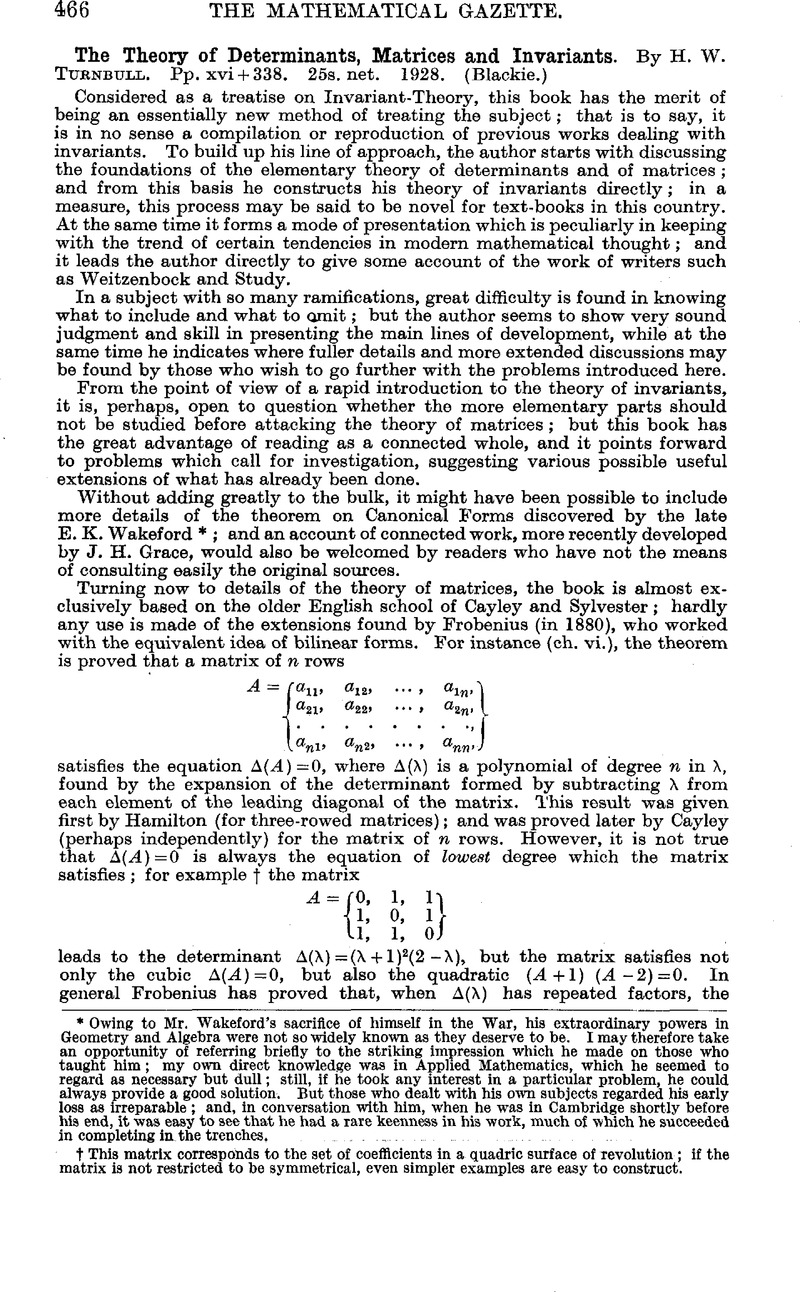No CrossRef data available.
Published online by Cambridge University Press: 03 November 2016

page 466 note * Owing to Mr. Wakeford’s sacrifice of himself in the War, hia extraordinary powers in Geometry and Algebra were not so widely known as they deserve to be. I may therefore take an opportunity of referring briefly to the striking impression which he made on those who taught him; my own direct knowledge was in Applied Mathematics, which he seemed to regard as necessary but dull; still, if he took any interest in a particular problem, he could always provide a good solution. But those who dealt with his own subjects regarded hia early loss as irreparable; and, in conversation with him, when he was in Cambridge shortly before his end, it was easy to see that he had a rare keenness in his work, much of which he succeeded in completing in the trenches.
page 466 note † This matrix corresponds to the set of coefficients in a quadric surface of revolution; if the matrix is not restricted to be symmetrical, even simpler examples are easy to construct.
page 467 note * Take X=x+y, and replace x by X; then the substitution becomes
![]()
Now if we take Y as any linear function lX+my, we see that Y’ = — mX+2Y; and here the term in X cannot be removed; but it can be standardised by putting m= — 1, and then the reduced form is
![]()
page 467 note † The assumption that the usual standard form still persists when Δ(λ) =0 has equal roots, means, in the theory of two conies, that only double contact can be handled.